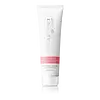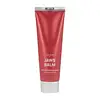What's inside
What's inside
 Key Ingredients
Key Ingredients

No key ingredients
 Benefits
Benefits

 Concerns
Concerns

 Ingredients Side-by-side
Ingredients Side-by-side

Water
Skin ConditioningButylene Glycol
HumectantEthylhexyl Palmitate
EmollientCetearyl Alcohol
EmollientGlyceryl Stearate Se
EmulsifyingPanthenol
Skin ConditioningPhenoxyethanol
Preservative4-PCA Dimethicone
Skin ConditioningHydroxyethyl Acrylate/Sodium Acryloyldimethyl Taurate Copolymer
Emulsion StabilisingHydroxypropyl Guar Hydroxypropyltrimonium Chloride
Benzyl Alcohol
PerfumingSqualane
EmollientParfum
MaskingSodium Stearoyl Glutamate
CleansingAminomethyl Propanol
BufferingLimonene
PerfumingDisodium EDTA
Disodium PEG-12 Dimethicone Sulfosuccinate
CleansingPolysorbate 60
EmulsifyingCitric Acid
BufferingDehydroacetic Acid
PreservativeSorbitan Isostearate
EmulsifyingLinalool
PerfumingCitronellol
PerfumingCitral
PerfumingWater, Butylene Glycol, Ethylhexyl Palmitate, Cetearyl Alcohol, Glyceryl Stearate Se, Panthenol, Phenoxyethanol, 4-PCA Dimethicone, Hydroxyethyl Acrylate/Sodium Acryloyldimethyl Taurate Copolymer, Hydroxypropyl Guar Hydroxypropyltrimonium Chloride, Benzyl Alcohol, Squalane, Parfum, Sodium Stearoyl Glutamate, Aminomethyl Propanol, Limonene, Disodium EDTA, Disodium PEG-12 Dimethicone Sulfosuccinate, Polysorbate 60, Citric Acid, Dehydroacetic Acid, Sorbitan Isostearate, Linalool, Citronellol, Citral
Water
Skin ConditioningDimethicone
EmollientDipropylene Glycol
HumectantCaprylic/Capric Triglyceride
MaskingParfum
MaskingCitral
PerfumingLimonene
PerfumingLinalool
PerfumingCyclopentasiloxane
EmollientSodium Acrylate/Sodium Acryloyldimethyl Taurate Copolymer
Emulsion StabilisingIsohexadecane
EmollientPolysorbate 80
EmulsifyingSorbitan Oleate
EmulsifyingPhenoxyethanol
PreservativePolysorbate 60
EmulsifyingButylene Glycol
HumectantCitrus Grandis Fruit Extract
AstringentFragaria Vesca Fruit Extract
AstringentMangifera Indica Fruit Extract
Skin ConditioningPsidium Guajava Fruit Extract
AstringentPrunus Armeniaca Fruit Extract
Skin ConditioningPrunus Persica Fruit Extract
AbrasivePassiflora Incarnata Fruit Extract
Skin ConditioningRubus Idaeus Fruit Extract
AstringentGlycolic Acid
BufferingLactic Acid
BufferingCitric Acid
BufferingMandelic Acid
AntimicrobialWater, Dimethicone, Dipropylene Glycol, Caprylic/Capric Triglyceride, Parfum, Citral, Limonene, Linalool, Cyclopentasiloxane, Sodium Acrylate/Sodium Acryloyldimethyl Taurate Copolymer, Isohexadecane, Polysorbate 80, Sorbitan Oleate, Phenoxyethanol, Polysorbate 60, Butylene Glycol, Citrus Grandis Fruit Extract, Fragaria Vesca Fruit Extract, Mangifera Indica Fruit Extract, Psidium Guajava Fruit Extract, Prunus Armeniaca Fruit Extract, Prunus Persica Fruit Extract, Passiflora Incarnata Fruit Extract, Rubus Idaeus Fruit Extract, Glycolic Acid, Lactic Acid, Citric Acid, Mandelic Acid
Ingredients Explained
These ingredients are found in both products.
Ingredients higher up in an ingredient list are typically present in a larger amount.
Butylene Glycol (or BG) is used within cosmetic products for a few different reasons:
Overall, Butylene Glycol is a safe and well-rounded ingredient that works well with other ingredients.
Though this ingredient works well with most skin types, some people with sensitive skin may experience a reaction such as allergic rashes, closed comedones, or itchiness.
Learn more about Butylene GlycolCitral is a fragrance and used to add a lemon-like scent to products. It is both naturally found in plants and created synthetically. In plants, it is commonly occurring in lemon myrtle, lemongrass, lemon tea-tree, lemon verbena, and other citruses.
The EU mandates Citral be listed separately as a fragrance. It is a known allergen and may cause contact dermatitis. Citral can also used as a masking ingredient.
The term 'fragrance' is not regulated in many countries. In many cases, it is up to the brand to define this term. For instance, many brands choose to label themselves as "fragrance-free" because they are not using synthetic fragrances. However, their products may still contain ingredients such as essential oils that are considered a fragrance.
The term 'citral' is a collective term for two geometric isomers: geranial/Citral A and neral/Citral B.
Learn more about CitralCitric Acid is an alpha hydroxy acid (AHA) naturally found in citrus fruits like oranges, lemons, and limes.
Like other AHAs, citric acid can exfoliate skin by breaking down the bonds that hold dead skin cells together. This helps reveal smoother and brighter skin underneath.
However, this exfoliating effect only happens at high concentrations (20%) which can be hard to find in cosmetic products.
Due to this, citric acid is usually included in small amounts as a pH adjuster. This helps keep products slightly more acidic and compatible with skin's natural pH.
In skincare formulas, citric acid can:
While it can provide some skin benefits, research shows lactic acid and glycolic acid are generally more effective and less irritating exfoliants.
Most citric acid used in skincare today is made by fermenting sugars (usually from molasses). This synthetic version is identical to the natural citrus form but easier to stabilize and use in formulations.
Read more about some other popular AHA's here:
Learn more about Citric AcidLimonene is a fragrance that adds scent and taste to a formulation.
It's found in the peel oil of citrus fruits and other plants such as lavender and eucalyptus. The scent of limonene is generally described as "sweet citrus".
Limonene acts as an antioxidant, meaning it helps neutralize free radicals.
When exposed to air, oxidized limonene may sensitize the skin. Because of this, limonene is often avoided by people with sensitive skin.
The term 'fragrance' is not regulated in many countries. In many cases, it is up to the brand to define this term. For instance, many brands choose to label themselves as "fragrance-free" because they are not using synthetic fragrances. However, their products may still contain ingredients such as essential oils that are considered a fragrance.
Learn more about LimoneneLinalool is a fragrance and helps add scent to products. It's derived from common plants such as cinnamon, mint, citrus, and lavender.
Like Limonene, this ingredient oxidizes when exposed to air. Oxidized linalool can cause allergies and skin sensitivity.
This ingredient has a scent that is floral, spicy tropical, and citrus-like.
Learn more about LinaloolParfum is a catch-all term for an ingredient or more that is used to give a scent to products.
Also called "fragrance", this ingredient can be a blend of hundreds of chemicals or plant oils. This means every product with "fragrance" or "parfum" in the ingredients list is a different mixture.
For instance, Habanolide is a proprietary trade name for a specific aroma chemical. When used as a fragrance ingredient in cosmetics, most aroma chemicals fall under the broad labeling category of “FRAGRANCE” or “PARFUM” according to EU and US regulations.
The term 'parfum' or 'fragrance' is not regulated in many countries. In many cases, it is up to the brand to define this term.
For instance, many brands choose to label themselves as "fragrance-free" because they are not using synthetic fragrances. However, their products may still contain ingredients such as essential oils that are considered a fragrance by INCI standards.
One example is Calendula flower extract. Calendula is an essential oil that still imparts a scent or 'fragrance'.
Depending on the blend, the ingredients in the mixture can cause allergies and sensitivities on the skin. Some ingredients that are known EU allergens include linalool and citronellol.
Parfum can also be used to mask or cover an unpleasant scent.
The bottom line is: not all fragrances/parfum/ingredients are created equally. If you are worried about fragrances, we recommend taking a closer look at an ingredient. And of course, we always recommend speaking with a professional.
Learn more about ParfumPhenoxyethanol is a preservative that has germicide, antimicrobial, and aromatic properties. Studies show that phenoxyethanol can prevent microbial growth. By itself, it has a scent that is similar to that of a rose.
It's often used in formulations along with Caprylyl Glycol to preserve the shelf life of products.
Polysorbate 60 is used to help stabilize products. It is a surfactant and emulsifier. These properties help keep ingredients together in a product. Surfactants help reduce surface tension between ingredients with different states, such as liquids and solids. Emulsifiers help prevent oils and waters from separating.
Polysorbate 60 is sorbitol-based and created from the ethoxylation of sorbitan. Ethoxylation is a chemical reaction used to add ethylene oxide. Sorbitan is a the dehydrated version of sorbitol, a sugar found in fruits.
In this case, the 60 comes from reacting 60 units of ethylene oxide with sorbitan.
Polysorbates are commonly used in medicine and foods.
Learn more about Polysorbate 60Water. It's the most common cosmetic ingredient of all. You'll usually see it at the top of ingredient lists, meaning that it makes up the largest part of the product.
So why is it so popular? Water most often acts as a solvent - this means that it helps dissolve other ingredients into the formulation.
You'll also recognize water as that liquid we all need to stay alive. If you see this, drink a glass of water. Stay hydrated!
Learn more about Water